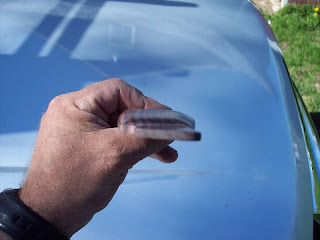If my plans from the OLF arrive soon, I will get started on the SJ I want to build. The wood has been in my shop for a couple of weeks now so it is acclimated and ready to go. I guess if all else fails, I can get started making the neck blank until the plans arrive. I really would like to get into a routine or system in building. I am planning on taking plenty of notes as well as a time and cost record for this build so I get some kind of idea of what it really takes to build a guitar. I know that I am by no means an expert, but I do feel that I have enough experience now that I can log my time and get a fairly good idea about the amount of time it takes. Material costs are pretty cut and dry so I am primarily interested in my time. I also have been terrible about note taking and that needs to change. I want to keep a detailed log on my builds from now on so I have a record of what works, and what doesn't work. That is the only way I will get better and start to get some predictability in the sound of these instruments.
I spent some time Saturday working on my dreadnought. You might remember that I adjusted the action at the saddle a couple of months ago, and when I was doing this, I noticed a crack in the saddle. Since I didn't have any guitar related work that I could do, I decided to make a new saddle and make a slight action adjustment at the nut as well. I had an unbleached bone saddle blank hanging around in my shop so I made a new saddle, deepened the nut slots a tiny bit and strung it up. I now have a guitar that has a nice low action with no buzzes. More importantly, I was able to spend almost 3 hours learning some beginner chords and had a lot of fun doing it. The lower action made it much easier for me to fret the strings cleanly which was extremely frustrating for me before. I just couldn't figure out how to fret the strings without touching the adjacent strings. I would try and try, get frustrated, and then finally give up. This was the first time that I actually "played" and had fun doing it. For the first time, I am excited to get the guitar out and start practicing. Hopefully I have turned a corner.
On a totally non-guitar related note, Saturday morning I got up, looked out my window, and saw something strange on my barn. My barn being as old as it is, has lots of holes in it that birds like to get into and make nests. I have one corner where two roofs come together that has been a favorite for the birds ever since we moved here. With spring here, the eggs have hatched and the babies are chirping loudly. It gets my attention every time I go to my spray area of my shop as that is the corner where the nest is. Unfortunately, the chirping also got the attention of something else too. During the night, something (I think a raccoon) got up on the roof and started tearing the roofing off to get to the nest. There was a lot of nesting material all over the lower roof, and two shingles were torn up. These shingles are metal, not asphalt so something with some strength and gripping claws had to pull on them. I am happy to say the claws of whatever was up there must have been too short because the babies are still up there safe and sound. I got up there and re-nailed the roofing down and watched to make sure the momma bird would come back. She did and the bird family is happy again..... so am I.

Oh the horror of it all! This is what the baby birds had to endure over night. Fortunately they made it. Those are metal shingles! I just hope the birds don't need some psychological counselling later in life because of this! Who knows, maybe one day I will see these birds crying on Oprah or Dr' Phil's couch about how they were traumatized as children and that is why they made the poor choices they have made later in life! lol

Here is the saddle from my dreadnought. You can see the crack running from the left corner to about 3/4 way to the right. I super glued it and sanded the bottom so the crack was lower down in the bridge. I have since changed it with a new unbleached bone saddle. This is just a good reminder to me why the neck / bridge angle is so important. This was the result of the straight edge being 1/16" over the bridge and an action that was set too high to begin with.




































































